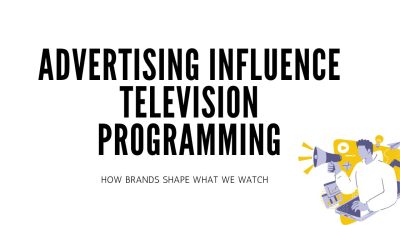Television didn’t just alter how we consumed entertainment — it effectively recast the advertising business. Television consumers: How did advertisers reach consumers before TV? But when television entered the American household in the 1950s, suddenly brands had new opportunities to market themselves to audiences using sight, sound, and motion.
This shift altered everything from how creatives should think to how consumers should act. The evolution of advertising through television offers important lessons for the modern marketer and the current digital revolution we are experiencing.
The Pre-Television Advertising Landscape
Before assessing the effect of television, it’s worth addressing what advertising looked like in the pre-television era. It was ruled by print ads in newspapers and magazines. Radio gave you stories in sound, but it gave you nothing for your eyes. Billboards made a visual impact, but only on a few people.
However, these classical techniques had limitations. Print advertisements could only use static images and text. The voice and sound effects were used to grab the attention of the listeners of radio commercials. Neither medium was able to integrate sound and image in an effective way of telling a story visually.
Advertisers had a hard time showing products in action. For a brand like a car manufacturer, they could feature their car in print or radio copy, but couldn’t show it driving down beautiful highways. Ingredients can be listed by food brands, but advertising how the food is cooked or presented cannot.
Television’s Game-Changing Introduction
Television added the strength of print’s visual images to the sound of radio, and it became a whole new advertising landscape. Suddenly, admen could photograph products in use in real-life settings, with room for voice-overs and background music.
It was this multichannel phenomenon that would change how brands interacted with consumers. Instead of making the audience imagine how a product operated, television could show it in action. Viewers could watch clothing in motion, food being prepared, and household products solving problems of daily living.
The medium also helped to bring the notion of moving pictures to advertising. Products could be viewed from all angles, people could naturally engage with brands, and advertisers could tell mini-stories around their wares.
The Rise of Visual Storytelling
Television allowed advertisers to make emotional stories around their products. Brands no longer needed to just provide a laundry list of features and benefits, but could connect emotionally through storytelling.
Early commercials on television had housewives using a cleaning product or families eating breakfast cereals. These “imagined situations” allowed viewers to picture products in their own lives. The visual aspect itself made these stories more credible and memorable than they would have been by radio description alone.
Advertisers learned that showing cheerful families with their products was far more persuasive than telling people about product attributes. That change to lifestyle advertising was a linchpin of modern marketing, selling benefits over features.
Demographic Targeting Takes Shape
Television shows drew audiences targeted in detail, and marketed to demographics previously unattainable. Soap operas attracted a largely female audience and were often used to advertise household products. Sports stoked a male audience that was ideal for car and beer commercials.
This demographic targeting was revolutionary. Newspaper and radio ads were once the way to reach a large, unfocused audience. The variety of television’s programming meant advertisers could match their messages to suitable content, and an audience for it.
And so was born the idea of “prime time,” or the hours when advertisers could be guaranteed the largest audience. They booked premium time slots, which generated never-before-seen millions of reach and frequency.

The Birth of Brand Personalities
With the advent of television, brands could develop personalities by presenting them consistently in terms of style, visual appearance, spokesperson, and storyline. Now, companies could develop memorable characters, jingles, and visual branding that could continue across multiple ads.
Mascots became powerful brand ambassadors. From Tony the Tiger to the Pillsbury Doughboy to the Marlboro Man, characters like these became a part of pop culture beyond their advertising beginnings. These characters have built an emotional bond with the consumer that was beyond the product attributes.
Consistent visual branding became crucial. Related to that, the logos and color schemes, and design elements needed to work when translated onto the screen at home. This need has resulted in large investments in brand identity and graphic design.
Production Values and Creative Innovation
Television advertising required more production values than ever before. “Advertisers had to have good directing, lighting, set design, and actors to produce captivating commercials.”
This professionalization raised advertising from mere product announcements into well-crafted entertainment. Agencies started to employ talent from Hollywood and Broadway, adding theatrical dexterity to commercial production.
The work of creation became both more collaborative and more combative. Conceived by spadesful of young copywriters, art directors, producers, account execs, in which guys like you worked in unison to create ideas with all TV’s unique advantages.
Consumer Behavior Transformation
TV commercials changed the habits of consumers forever. The audience was getting familiar with a product before actually buying it. This level of consumer expectation sets higher standards and forces product quality and presentation to improve.
Impulse-buying was fueled by the medium as well. Good TV commercials could boost demand for products immediately, and good advertising could spike sales almost overnight.
Brand awareness increased dramatically. The broad reach of television allowed national brands to achieve an unprecedented level of recognition. And all of that translated into market share for those companies that leveraged the medium effectively.
The Economics of Television Advertising
Television advertising demanded large amounts of money, and the marketplace for marketing was transformed. Commercial production costs for television were many times more expensive than for print or radio. TV time buys were huge expenditures of rate dollars.
This higher cost made it possible initially only for larger companies to advertise on television. This high barrier to entry resulted in market consolidation for various industries since smaller competitors couldn’t replicate the advertising reach of television advertisers.
But in many cases, television was good enough to make the expense worthwhile. Successful campaigns might increase sales by an amount much greater than their advertising cost, resulting in a positive return on investment.
Impact on Advertising Agencies
Television was a complex medium that demanded specialized knowledge, and thus the full-service advertising agency was born. These groups are required to own the capacity to produce television programmed, media buy, and also make aesthetically desirable pictures which tell convincing stories.
Agency roles expanded significantly. Account executives had to know how TV was produced. Creative directors need to know the visual storytelling techniques. Media planners were at the mercy of programming schedules and audience measurement.
This evolution was the professionalization of the advertising industry. Agencies became more than just suppliers and instead turned themselves into strategic partners, outlining the marketing communications strategy for their customers.

Long-term Industry Changes
Television advertising set the tone for trends we are still seeing in marketing today. The focus on visual storytelling, the use of demographics to target audiences, and the building of brand personality all came about in the early days of TV.
The medium has also laid the groundwork for contemporary media measurement and analytics. Television demanded sophisticated audience research to justify investments in advertising. In any kind of advertising, this data-based formula was now universally applied.
The success of television showed the impact of using more than one sensory stimulus in advertising. This class still thrives and innovates in digital advertising, VR marketing, and interactive media experience.
Lessons for Modern Marketers
What TV’s Emergence Can Teach Advertisers in the Digital Remembrance of Commercials Past. What worked for TV ads — visual storytelling, ad-directed demographics, and brand personality — still work in today’s marketing channels.
Similar are the lessons from the move from the old industry to the new in television. Firms that adapted quickly to what television could do established unsustainable competitive positions, while those that didn’t experienced marketing challenges when their grip on the market was pried loose.
The effects of TV on advertising If you think about it, this dynamic of television’s impact on advertising is one of the most significant shifts in the history of marketing. By integrating visual and sound, the medium offered new possibilities for brand communication and consumer interaction. The shifts it brought are still influencing how we view the effectiveness of ads, develop creative work and connect with audiences.
Comprehension of this historical transformation will enable today’s marketers to better recognize what marketers of the past have had to face, and how marketers have benefited from new technologies. And in the same way television transformed advertising in the 1950s, digital is opening the door to a new landscape of brand communication.
Television fundamentally reshaped how brands reached mass audiences, setting a precedent for every major advertising shift that followed. But in today’s data-driven landscape, success depends on more than just reach—it hinges on how well you process and act on data. For a forward-looking perspective, explore our article on Why Data Processing is Critical for Business Success in 2025, where we break down how modern businesses can leverage data for smarter decisions.





